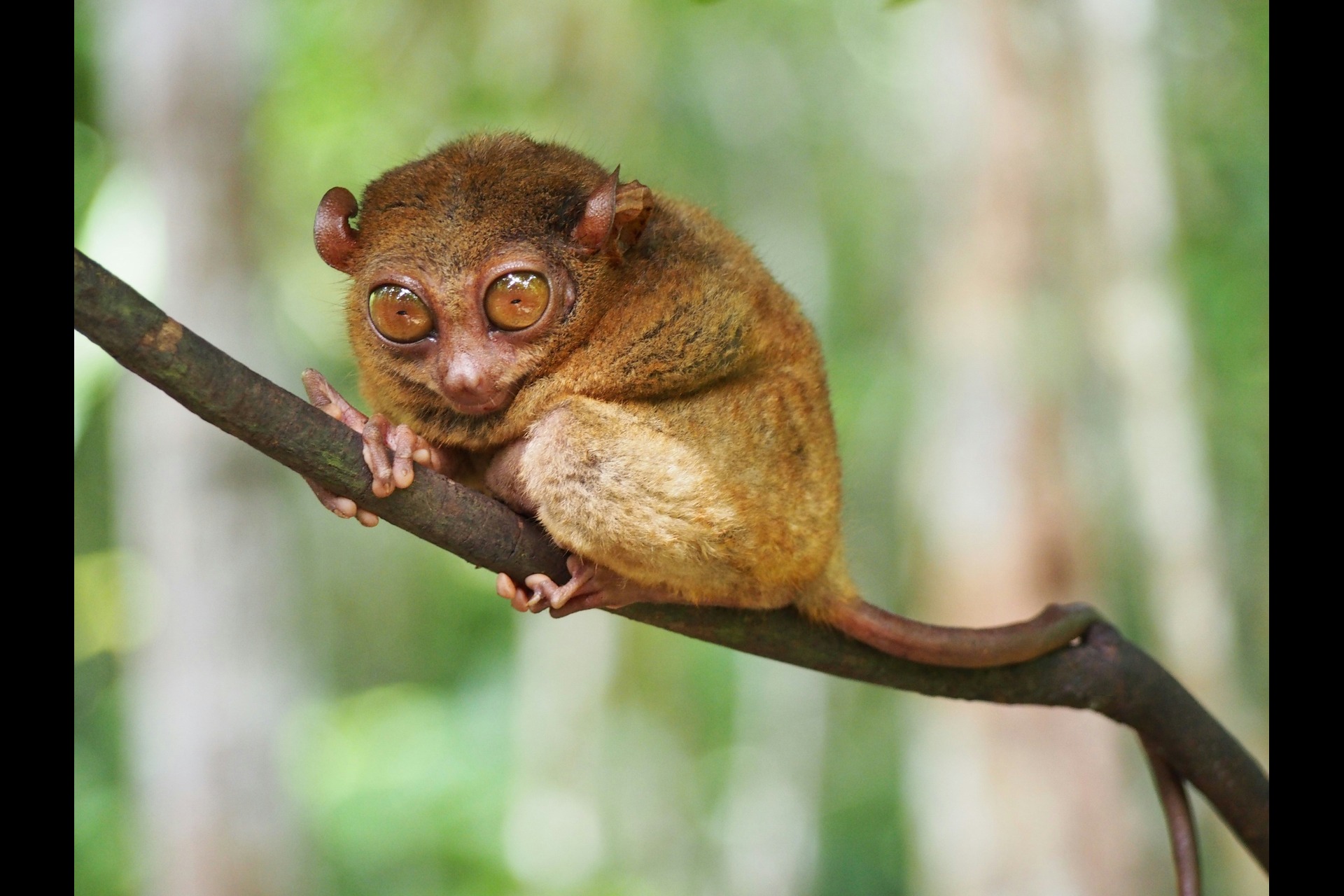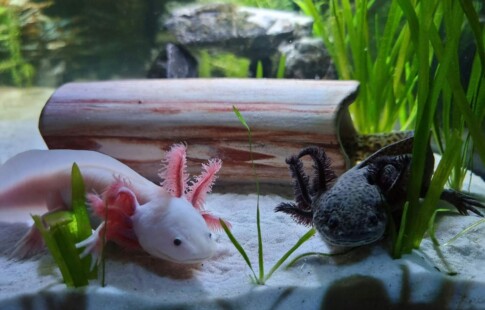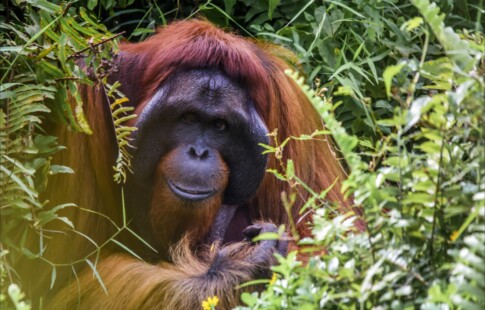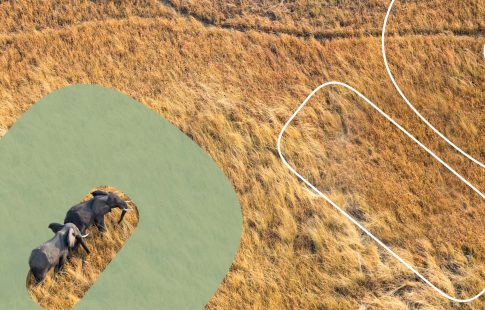
Is the Tarsier a Monkey? Everything You Need to Know About Nature’s Tiny Nocturnal Marvel
We are reader-supported. When you buy through links on our site, we may earn affiliate commission.
In Southeast Asia’s dense, tropical forests, a creature no bigger than a human fist clings to a branch. Its elongated fingers, protruding ears, and bulging, greenish-gold eyes make it unmistakable, like the wise Jedi Master Yoda. Meet the tarsier, one of the world’s smallest primates and perhaps the most misunderstood.
Despite its cult-like status in wildlife documentaries and conservation circles, the tarsier remains elusive in behavior and biology. For one, it’s often mistaken for a monkey. The primate defies categorization and remains a subject of debate to this day. So what is a tarsier if not a monkey?
What Is a Tarsier, Really?
Tarsiers are small primates in the family Tarsiidae. There are around 13 known species, including the Philippine tarsier (Carlito syrichta), its most well-studied specimen. They’re pretty small, typically weighing only between 80 and 150 grams, and have a body length of nine to 16 centimeters, just small enough to fit in your palm.
What’s unmissable about the creature is its gigantic oggling eyes, each larger than its brain. While huge, these eyes are immovable in their sockets, requiring the tarsier to turn its head a full 180 degrees in either direction.
While often called tarsier monkeys, they are neither monkeys nor lemurs, but belong to an ancient lineage closer to apes and humans than many realize. They are an evolutionary anomaly. They sit on a fragile branch of the primate family tree that dates back tens of millions of years. Fossil records indicate tarsier-like primates roamed Europe, North America, and Asia during the Eocene epoch, some 56 to 34 million years ago.
Why They Look Surreal
The tarsier’s large eyeballs aren’t just for show. They have a massive visual cortex that processes high-resolution images in low light. Unlike most nocturnal mammals, tarsiers lack a tapetum lucidum — the reflective layer that gives animals glowing eyes at night. Instead, their entire visual system evolved to function in near-darkness without this feature. Their night vision is so precise that they can spot a cricket on a branch several meters away and leap to catch it mid-air.
Built to Leap Amongst Trees
The name tarsier comes from their elongated tarsal or ankle bones, which are proportionally longer than in any other primate. These adaptations allow them to leap more than 40 times their body length, propelling themselves from tree to tree in dense forest.
Each hand features disk-like pads at the fingertips for a better grip, while its long, skeletal fingers aid in climbing and catching prey. The tail, often twice the length of the body, helps with balance and can act as a brace when upright on tree trunks.
Tarsier Behavior: Shy, Solitary, and Ultrasonic
Tarsiers live in dense secondary forests, primary rainforests, and coastal mangroves. Their geographic range stretches across Southeast Asia, with hot spots in Bohol, Leyte, Samar, and Mindanao in the Philippines, as well as Sulawesi and Borneo.
They’re strictly nocturnal and mostly solitary, although some species form monogamous or small family groups. Others, like the Indonesian spectral tarsier, can display facultative monogamy, exhibiting polygyny, where a male mates with multiple females. However, this only occurs when there are high-quality sleeping sites. During the day, they nest in tree hollows or dense vegetation.
One of their most unique behaviors is their communication style — ultrasonic vocalizations. These high-frequency calls are often at 70kHz, inaudible to the human ear, and help them maintain territory and find mates.
In Sulawesi, pairs of spectral tarsiers even perform nightly duets of complementary calls, a behavior that’s as rare as the creature in the animal kingdom.
Nature’s Only Carnivorous Primate
Unlike monkeys and apes, tarsiers are completely carnivorous. They eat insects, lizards, snakes, small birds, and bats. They typically catch prey by silently stalking it and then leaping onto it with pinpoint accuracy.
Tarsiers can consume prey equal to 10% of their body weight in a single night, aiding insect population control in tropical ecosystems. Thanks to sharp teeth and powerful jaw muscles, they chew and digest their food whole, including bones and feet!
More Endangered Than You Think
While tarsiers may not be as famous as pandas or rhinos, their situation is no less urgent. Tarsiers are considered vulnerable, with some species identified as endangered and critically endangered due to environmental and human risks to their population, which has dropped to as much as 50% since 2012.
1. Deforestation and Habitat Fragmentation
Logging, mining, and agricultural expansion are the primary threats. In the Philippines alone, forest cover shrank from 27 million hectares in the 1500s to a sparse 7.22 million hectares in 2022. Tarsiers, which rely on large, undisturbed territories, struggle to survive in these fragmented ecosystems.
2. Tourism and Exploitation
Poorly regulated tourism has become another major threat. Tarsiers are highly sensitive to touch, noise, and artificial light. Exposure to camera flashes or being handled by visitors can cause fatal stress responses, including self-harm and head trauma from banging their heads against cage walls.
3. Illegal Pet Trade
Despite laws protecting them, tarsiers are still captured and sold in black markets. Their specialized diets and stress intolerance make them unsuitable for captivity, often dying shortly after being removed from the wild.
Why Saving Tarsiers Matters
The tarsier plays a vital role in maintaining the balance of its ecosystem. By feeding on insects and small vertebrates, it keeps pest populations in check.
Moreover, the tarsier is a symbol of forest health. Its disappearance often signals broader environmental collapse. Protecting tarsiers means protecting wildlife, carbon sinks, and indigenous livelihoods.
Conservation Efforts: What’s Being Done to Protect Tarsiers?
Efforts to protect tarsiers primarily focus on habitat preservation, responsible tourism, and raising public awareness. These include establishing sanctuaries, regulating visitor access, and educating the public about the importance of conservation.
Philippine Tarsier Foundation
Located in Corella, Bohol, this organization has established a protected sanctuary and is leading habitat rehabilitation and breeding programs. It also serves as an educational center for conservation awareness. Visitors are welcome, but only under strict no-touch, no-flash, and low-noise policies to protect the animals.
IUCN Red List Status
The Philippine tarsier is currently listed as Near Threatened due to its declining population. However, some island subspecies may be even closer to annihilation due to their extremely restricted ranges.
Unlike the Golden Lion Tamarin population, which grew from 200 to 2,500 thanks to conservation and cooperative breeding efforts, attempts to breed captive tarsiers have had limited success. Sanctuaries in the Philippines and Indonesia focus on habitat-based conservation rather than captive reproduction.
What You Can Do
- Visit ethical sanctuaries that enforce no-touch, no-flash, low-noise policies.
- Support reforestation efforts through local NGOs or global platforms.
- Avoid wildlife selfies and speak up against exploitative animal attractions.
- Share credible information to fight myths, particularly on tarsiers as pets.
- Encourage policy reform and funding for small-species conservation.
FAQs About the Tarsier
Is the tarsier a monkey?
No. Tarsiers are primates, but not monkeys. They belong to the same suborder as monkeys and apes because they share the same dry, furry nose. Both have bony eye sockets and are more reliant on sight than smell. Other than that, they are vastly different.
What’s an interesting fact about tarsiers?
As small as they may be, tarsiers have the largest mammalian eyes compared to their body size. Each eye is about the same size as their brain. However, it’s fixed in place, so they need to swivel their heads to look around.
Why can’t we touch a tarsier?
Tarsiers are highly sensitive animals that should never be disturbed. When touched, held, or kept in captivity, they bang their heads against objects, which kills them because they have thin skulls.
Do tarsiers bite?
Yes. A tarsier’s bite packs a punch, but they’re not necessarily aggressive. They’re shy primates that are so sensitive, they easily stress out.
What do tarsiers eat?
Tarsiers eat nocturnal insects, small lizards, snakes, and fruit bats, which they catch by leaping from one tree to another. They are the only completely carnivorous primates known to consume every part of their prey.
Protecting the Forest’s Quietest Watcher
Since tarsiers are not as famed as elephants, gorillas, and tigers, it’s easy to overlook the fragile brilliance of such smaller species. Yet in its quiet persistence and ancient lineage, the tarsier tells a story of survival and vulnerability. To protect the tarsier is to protect millions of years of evolutionary history, and to take a stand for the delicate balance of life in the world’s vanishing rainforests.
Share on
Like what you read? Join other Environment.co readers!
Get the latest updates on our planet by subscribing to the Environment.co newsletter!
About the author

Jane Marsh
Starting from an early age, Jane Marsh loved all animals and became a budding environmentalist. Now, Jane works as the Editor-in-Chief of Environment.co where she covers topics related to climate policy, renewable energy, the food industry, and more.





